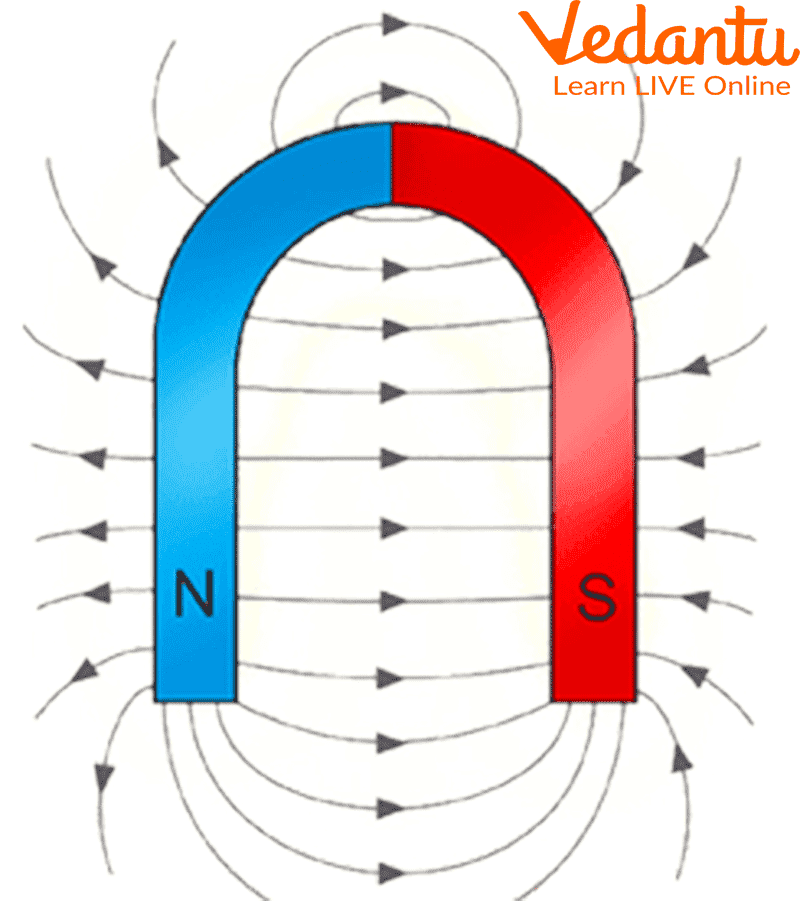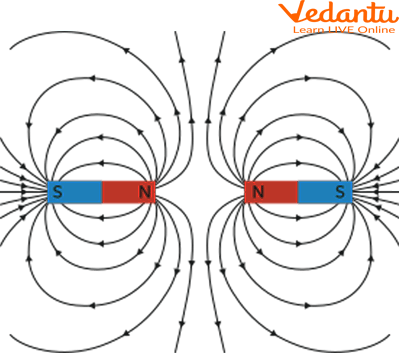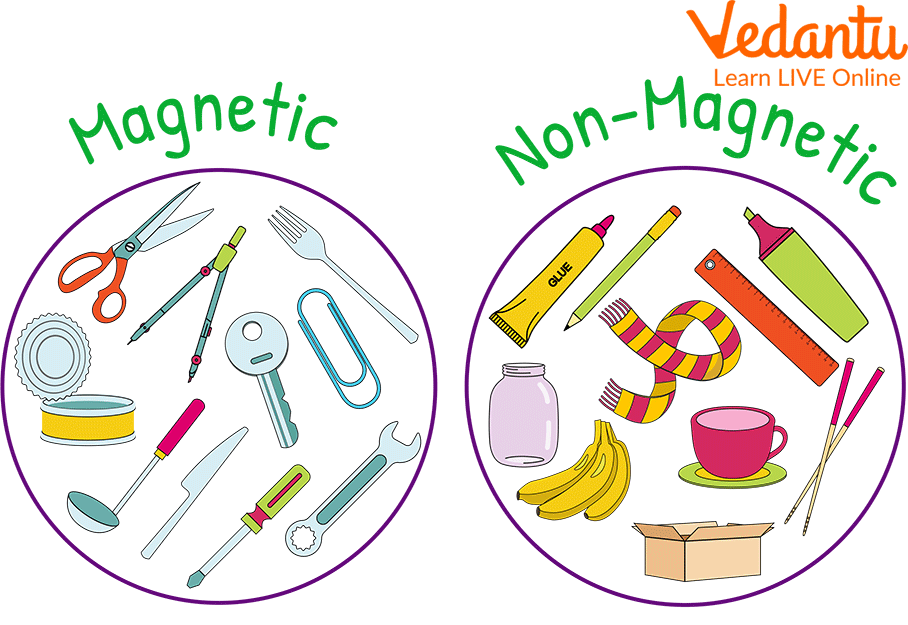




Why Are Magnets Important in Our Daily Lives?
Have you ever played with magnets? And by magnets, it is meant these two heavy pieces of metal that are always stuck to each other or to a metal surface. You must have also noticed that magnets stick together only if made in one direction. Opposite sides often repel each other.
If you’ve wondered about these questions, ‘What are magnets made of?’ ‘Which two sides repel?’ ‘What kind of material attracts a magnet?’ ‘How does Magnetism work?’ Then this article might help you find answers to some of these questions. Let's jump right in!

Depiction of a Magnet
What are Magnets?
A magnet is a special type of metallic substance that is able to attract metals towards itself. Magnets produce an imaginary magnetic field (like an imaginary territory). Any metallic object that is present within a magnet’s magnetic field gets attracted towards it (any metallic object within its territory belongs to that magnet!).
Magnets are able to attract or pull objects even from a distance as long as the metallic object is present within its territory (called its magnetic field).

A Magnet Placed in a Magnetic Field
Poles of a Magnet
Magnets have 2 ends, which are often called ‘poles’. So, a magnet has 2 poles namely, the north pole (denoted by N) and the south pole(denoted by S).
The magnetic field (recall, a magnet’s territory) is strongest towards and around the pole. In other words, a metallic object is more easily attracted to the magnet when placed near the poles than anywhere else around a magnet.
The Earth has a North Pole and a South Pole. It is important for you to understand that magnets are very important as the Earth behaves as a huge magnet itself!

Poles of a Horseshoe and Bar Magnet
Magnetic Field
In simple words, the magnetic field can be defined as the area surrounding which the magnet can exert a ‘magnetic force’ to attract magnetic objects towards it. Irrespective of the size and shape of the magnet, all magnets exhibit a magnetic field.
The magnetic field is an imaginary concept. It helps us to understand the working of a magnet and its properties better.
The magnetic field is represented by ‘field lines’ which are closed continuous curves of increasing size emerging from the poles of a magnet, surrounding the entire magnet.
It is important to understand that the ‘magnetic force’ produced by a magnet is related to the strength of the magnetic field and not to the size or shape of the magnet.

Magnetic Field Lines
How does Magnetism work?
Magnetism can be defined as a force of push or pull exerted by a magnet on a metallic object. It is also referred to as the ‘magnetic force’. On a much deeper level, it is due to a specific alignment of electrons (negatively charged species) within the solid itself.
This property has a wide application in our modern-day technology. It is used majorly in electronic devices, both in households and industries. Any device you name, TV, computer, ovens, tablets, they all have magnets in them
Objects That Attract and Repel
Substances can be classified based on their behaviour around magnets. The magnetic behaviour of an object is an important physical property studied in Chemistry and Physics.
Objects which are attracted to a magnet when placed under a magnetic field are called ‘magnetic objects’. Examples of magnetic objects include metals like iron, cobalt, nickel, etc.,
Objects which are not attracted to a magnet when placed under a magnetic field are called ‘non-magnetic objects’. Examples of non-magnetic objects include non-metals like silicone, plastics, carbon, etc.,
Going by the famous saying “Like poles repel and unlike poles attract” the north pole of a magnet only attracts the south pole of the magnet and vice versa. North poles repel each other and the same holds true for the south poles.

Magnetic and Non-Magnetic Objects

Attraction and Repulsion of Magnets
Properties of a Magnet
We have some specific properties which determine a magnet such as the following:
Magnets attract magnetic substances.
When suspended freely (tied by a string at the centre and let to hang freely), it aligns its poles towards the north and south direction (remember the earth is a magnet?).
Poles of a magnet are always paired (you can only find magnets with BOTH the poles and never with just one)
Like poles of a magnet repel; unlike poles attract.
Uses of Magnets in Everyday Life
Computers and other electronic devices probably have millions of tiny magnets in their components that help their proper function.
Magnetics is used to produce energy through generators.
They are widely used in compasses to mark directions during travel.
MRI scans use huge magnets to produce the required scan images.
Summary
Magnets are metallic objects that attract other metallic objects placed within their territory called the magnetic field. The magnetic field is an imaginary field of lines within which the magnet is able to exhibit its magnetic forces.
A magnet has 2 poles called the north pole and south pole, which align to the Earth’s North Pole and South Pole when made to suspend freely. Like poles of a magnet repel and unlike poles attract.
FAQs on Magnets Explained: Definition, Properties & Everyday Uses
1. What is a magnet, as explained for primary school science?
A magnet is a special object that produces an invisible area of force around it called a magnetic field. This field allows the magnet to pull on or attract certain types of metals, most notably iron. Every magnet has two ends, a North Pole and a South Pole, where its magnetic force is the strongest.
2. What are the most important properties of a magnet?
The key properties of a magnet are:
- Attractive Property: It attracts ferromagnetic materials like iron, nickel, and cobalt.
- Directive Property: When suspended freely, a magnet always aligns itself in the Earth's North-South direction.
- Law of Poles: Like poles (North-North or South-South) repel each other, while unlike poles (North-South) attract each other.
- Poles in Pairs: Magnetic poles always exist in pairs. You can never have a magnet with only a North Pole or only a South Pole.
3. What is the difference between natural and artificial magnets?
Natural magnets are materials found in nature that have magnetic properties without any human intervention. The most common example is lodestone, a naturally magnetised piece of the mineral magnetite. Artificial magnets, on the other hand, are man-made by magnetising materials like iron or steel. Examples include bar magnets, horseshoe magnets, and electromagnets used in devices.
4. Where can we see examples of magnets being used in everyday life?
Magnets are essential in many common items. You can find them in refrigerator doors to create a seal, inside speakers and headphones to help produce sound, in a magnetic compass for finding directions, and in electric motors that power fans and toys. They are also used in scrap yards to lift heavy iron objects.
5. Are all shiny, metallic objects attracted to a magnet?
No, not all metallic objects are magnetic. A common misconception is that magnets attract all metals, but they only attract ferromagnetic materials. These include iron, nickel, and cobalt. Metals like aluminium (used in foil and cans), copper (used in wires), and brass are not attracted to a magnet.
6. Why does a freely hanging magnet always point North and South?
This happens because the Earth itself behaves like a giant magnet, with its own magnetic North and South poles. The North Pole of a freely suspended magnet is attracted to the Earth's magnetic south pole (which is near the geographic North Pole), and its South Pole is attracted to the Earth's magnetic north pole. This reliable behaviour is the principle behind how a compass works.
7. What happens if you break a bar magnet in half?
If you break a magnet in half, you do not get a separate North Pole and a separate South Pole. Instead, you create two new, smaller magnets. Each new piece will immediately have its own North and South Pole. This demonstrates a fundamental rule of magnetism: magnetic poles always exist in pairs.
8. How can you make your own temporary magnet?
You can create a temporary magnet through a process called magnetic induction. The simplest way is to take a steel object, like a needle or a paperclip, and stroke it repeatedly in the same direction with one pole of a strong permanent magnet. This aligns the magnetic domains inside the steel, causing it to become magnetised for a short time.









